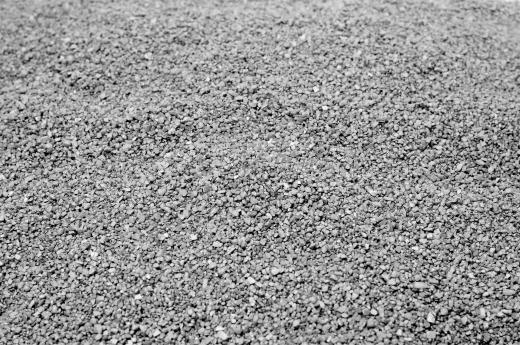Roughcast is a type of plaster that has many inclusions — including sand, gravel, pebbles and shell fragments — but the main components of the plaster are lime and cement. This type of plaster is coarse and pebbly in appearance, lending it the alternate name of pebbledash, but it is applied flat to a surface. Roughcast is used mainly on external surfaces as a decorative element for country homes, and it may come in different colors, based on the inclusions. One unpopular form of this plaster is called pebble-dashing, which is made by tossing small stones and gravel on the wet plaster while it is drying, a move that commonly reduces the home’s property value.
When a house or structure is built, the owners or builders often use a decorative element to make the structure unique. Roughcast is a plastering technique that starts with an average plaster made from lime and, sometimes, with cement. The difference between pebbledash and regular plaster is the inclusion of small materials, such as pebbles and gravel. By adding these small fragments into the mix, pebbledash creates a coarse and pebbly surface that is textured both visually and tactilely.

Some roughcast mixes will come pre-made with inclusions, while others start as plaster and have the inclusions added in before being applied to the surface. After being mixed to create a slurry, the pebbledash is placed on a surface. While pebbledash is coarse, it must be flat and spread evenly, without lumps, or the effect will look sloppy.
In the 1910s, roughcast was a common design element seen on many houses. It has since lost popularity but still can be seen on many houses. The most common houses to sport this type of finish are country homes, because this adds a casual and natural effect to the structure. Seen most commonly outside, roughcast also can be used inside, but this application is rare.
Depending on what the inclusions are, roughcast can have different color effects. If blue inclusions are added, for example, then the entire effect will have a blue hue. An arrangement of different colored inclusions can cause the colors to blend. Glass also can be added to the slurry, but this is rarely done.
While roughcast is usually seen as a pleasant effect, one variant is largely unpopular and can reduce property values by about 5 percent. This is called pebble-dashing. With this technique, the inclusions are added to the wall after the plaster is placed on the surface, creating an uneven spread. The inclusions also are likely to fall out of the plaster after a few months or years, making the appearance even less attractive.
